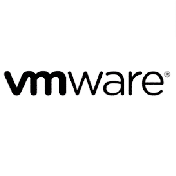Seminarinhalt
Course objectives
After completing this course, students should to be able to:
- Articulate the definition of cloud computing and typical characteristics of cloud
- Categorize cloud deployment models
- Explain when companies benefit from cloud computing, and what challenges they face
- Take part in a conversation about cloud without struggling with terminology
- Describe the stages of the ITIL-4 customer journey to the cloud
- Provide criteria for selecting the right cloud provider and solution
- List the typical contents of a cloud service agreement with a provider
- Explain various transformation scenarios
- Explain non-technical challenges related to cloud computing
- Articulate security concerns and how they can be addressed
- Articulate challenges when operating a cloud in a volatile environment
- Describe the purpose, benefits and components of HPE GreenLake at a high leve
Programm
- Cloud Characteristics and Definitions
- Cloud Service and Deployment Models
- Cloud Economics
- Benefits of Cloud Computing
- Challenges and Concerns with Cloud Computing
Key terms and definitions
- Workshop and debrief: Determine the meaning of key cloud terminology
- Pet versus Cattle, Mutable versus Immutable
Moving Services to Cloud
- The ITIL-4 Customer Journey to the Cloud
- Make a Decision: Choosing the Right Cloud
- Sign the Contract: Coming to an Agreement
- Migrate the Services: Different On-Ramps to the Cloud
- Technology is not everything: Organizational impact
Operating Cloud Services
- Managing cloud resources
- Addressing the cloud’s Achilles heel: Security
- Workshop and debrief: Cloud security issues and concerns
- Operating the Cloud in a Volatile Environment: Volatility, uncertainty, complexity and ambiguity (VUCA) in cloud computing
HPE’s Approach to the Cloud
- On-Premises vs Cloud
- GreenLake Capacity Management
- HPE GreenLake Infrastructure
- Customer-managed resources vs HPE-managed resources
- HPE GreenLake Services
- HPE GreenLake Central



